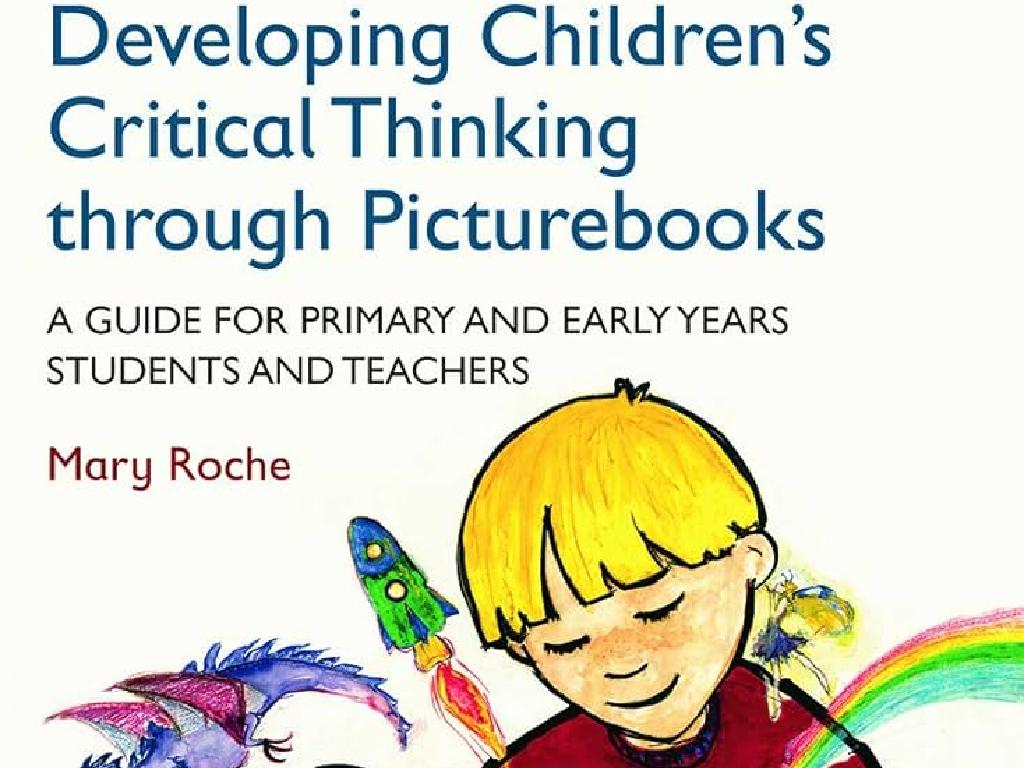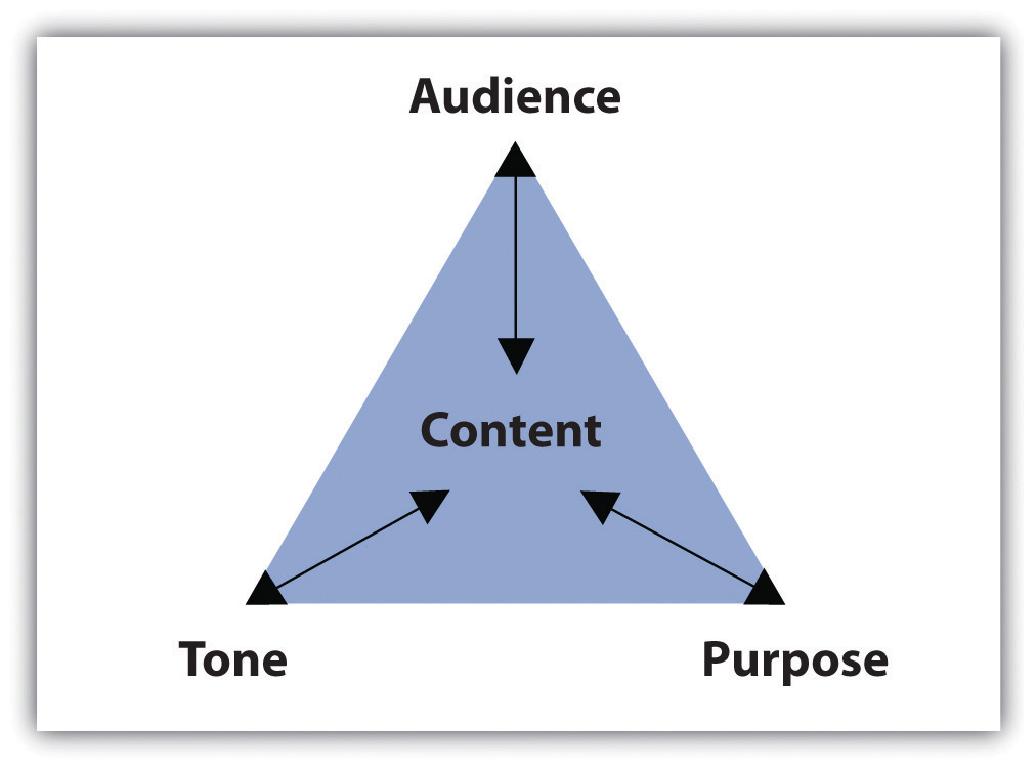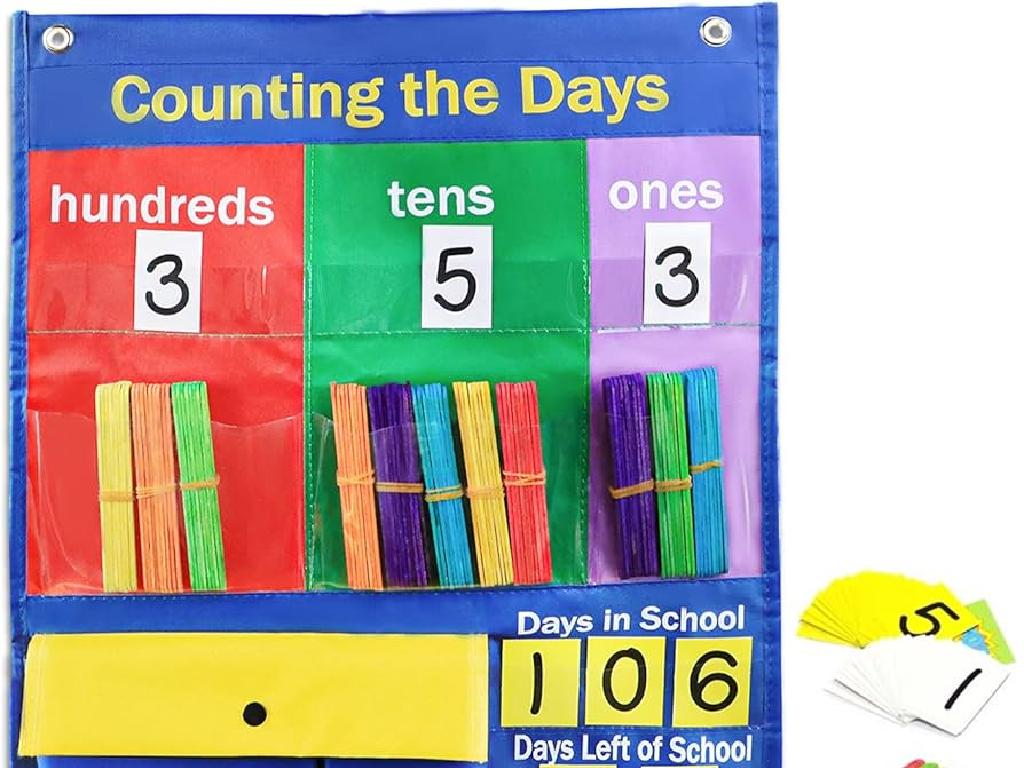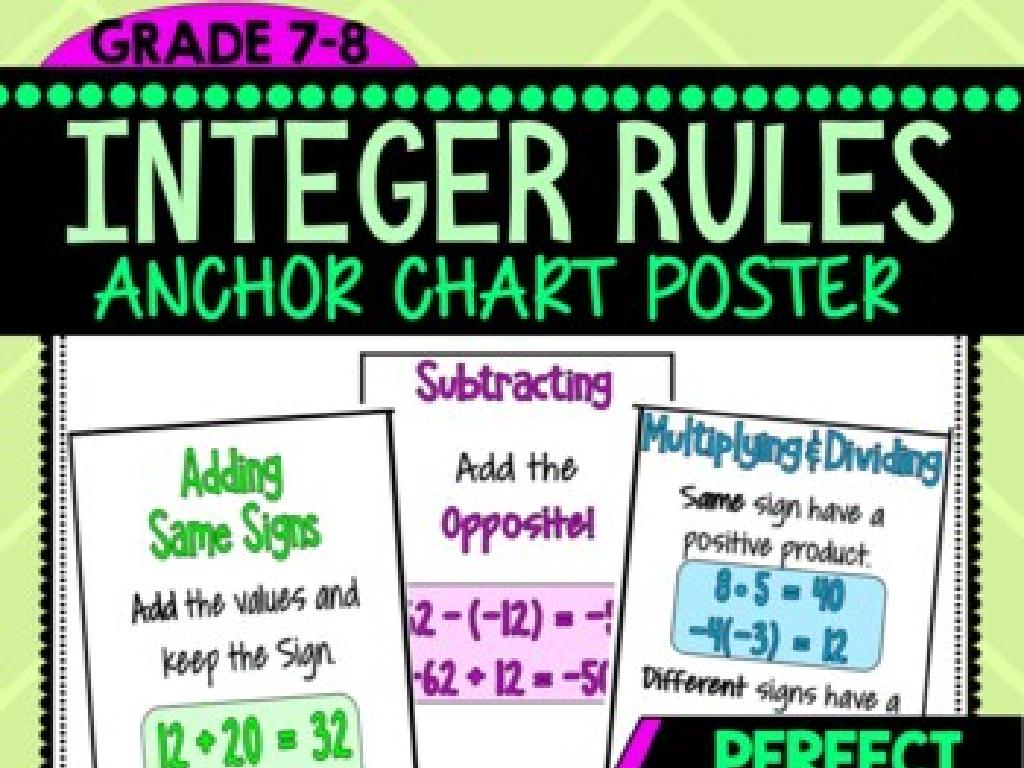Put The Sounds In Order
Subject: Language arts
Grade: Pre-k
Topic: Rhyming
Please LOG IN to download the presentation. Access is available to registered users only.
View More Content
Welcome to Rhyming: Sounds in Order
– Greeting with a warm smile
– Today’s topic: Sounds in Order
– What are rhyming words?
– Words that have the same ending sound
– Examples: ‘cat’ and ‘hat’
– ‘Cat’ and ‘hat’ sound the same at the end!
|
Begin the class with a friendly greeting to create a welcoming atmosphere. Introduce the concept of rhyming by explaining that rhyming words are words that end with the same sounds. Use very simple and familiar words to illustrate this concept, such as ‘cat’ and ‘hat’, ensuring that the examples are easy for Pre-k students to understand and repeat. Emphasize the ending sounds of the words to help students grasp the idea of rhyming. Encourage the children to listen carefully to the sounds and try to come up with their own rhyming words. This will set the foundation for the day’s lesson on putting sounds in order and understanding the basic structure of rhymes.
What is Rhyming?
– Understanding rhyming words
– Words that sound the same at the end
– Examples of words that rhyme
– Cat, hat, bat, and mat all have the ‘at’ sound
– Listen to a rhyme together
– We’ll enjoy a fun rhyme as a class
– Identify rhymes in the song
– Find words that sound alike in the rhyme
|
This slide introduces the concept of rhyming to Pre-K students. Start by defining rhyming words as those that have the same ending sound, which helps with phonemic awareness. Provide clear examples using simple words that the students are likely to know. Play a short and catchy rhyme for the class, and then engage the students by asking them to listen for and identify words that rhyme. This activity will help them recognize rhyming patterns and sounds, which is an essential skill in early reading development. Encourage participation and praise efforts to build confidence.
Sounds in Words: Rhyming Fun
– Explore sounds in words
– Words are made up of different sounds
– Practice letter sounds
– Say the sounds for letters like ‘b’, ‘c’, ‘t’
– Match sounds to pictures
– Find a picture that starts with the sound ‘buh’ or ‘sss’
– Rhyming game
– Find words that sound the same at the end like ‘cat’ and ‘hat’
|
This slide is aimed at helping Pre-k students understand the concept of phonics, which is the relationship between sounds and their spellings. Start by discussing the different sounds that make up words. Engage the students in practicing the sounds of various letters, emphasizing the phonetic sound rather than the letter name. Use visual aids like pictures of objects to help students match the beginning sounds to the correct images. Incorporate a rhyming game where students find pairs of words that rhyme, reinforcing their understanding of sounds and word patterns. This activity will enhance their phonemic awareness, a critical skill in early reading development.
Playing with Sounds: Making New Words
– Sounds make up words
– Each sound in a word is like a puzzle piece.
– Rearrange blocks for new words
– Switch the blocks, like CAT to ACT.
– Practice with three-letter words
– Try it with words like BAT, HAT, and RAT.
|
This slide introduces the concept that words are made up of individual sounds, and changing the order can create new words. Use physical letter blocks to demonstrate how rearranging them forms different words. This tactile method helps Pre-K students understand the abstract concept of phoneme manipulation. Start with simple three-letter words to ensure the activity is age-appropriate. During the next class, have a hands-on activity where students can practice rearranging letter blocks to form new words from a given word. This will help them understand the concept of anagrams and build their phonemic awareness.
Let’s Find Rhymes!
– Introduction to rhyming pairs game
– We’ll match words that sound the same at the end, like ‘cat’ and ‘hat’.
– Demonstration of the game
– I’ll show you how to find words that rhyme together.
– Encourage teamwork in finding rhymes
– Work with friends to find as many rhymes as you can.
– Celebrate all attempts at rhyming
|
This slide introduces a fun and interactive game to help Pre-k students understand the concept of rhyming. Start by explaining what rhymes are with simple examples. Demonstrate the game by showing a few examples of rhyming pairs. Encourage the students to participate actively and to work together to find rhyming words, emphasizing that it’s okay to make mistakes and that every attempt is valuable. Provide positive reinforcement to ensure a supportive learning environment. Possible activities include rhyming memory cards, rhyming bingo, or a rhyming scavenger hunt around the classroom.
Rhyming Story Time
– Read a rhyming story aloud
– Choose a story with simple, clear rhymes
– Pause for rhyme guesses
– Give students time to think and guess the rhyming word
– Discuss story rhymes
– Talk about the rhyming words and their sounds
– Encourage participation
|
This slide is for a class activity focused on rhyming. Start by reading a short story with a strong rhyming pattern, pausing after each rhyming sentence to allow the students to guess the next rhyming word. This interactive approach engages the students and helps them listen for and recognize rhyming sounds. After reading, discuss the rhymes found in the story, emphasizing the sound patterns and how they contribute to the rhythm of the story. Encourage all students to participate by asking questions and praising their efforts. This activity will help students develop phonemic awareness and enjoy the musicality of language.
Create Your Rhyme
– Let’s make our own rhymes
– Words and pictures for inspiration
– Use the provided words and pictures to think of rhyming words
– Write and draw your rhyme
– Combine your words into a short rhyme and draw a picture to go with it
– Share your rhyme with the class
|
This slide is designed to encourage Pre-k students to engage in creating their own rhymes, which helps in understanding the concept of rhyming and sound patterns. Provide a selection of words and corresponding pictures to spark ideas. Assist the children in forming coherent rhymes and support them in illustrating their rhymes to reinforce the connection between the words and their meanings. Once completed, allow each student to present their rhyme to the class, fostering a sense of accomplishment and sharing. This activity not only promotes creativity but also enhances phonemic awareness and can be a fun way to end the class.
Class Activity: Rhyme Time!
– Split into small groups
– Get a set of rhyming cards
– Each card has a picture and a word
– Match cards into rhyming pairs
– Work together to find words that sound alike
– Share your rhymes with the class
|
This activity is designed to help Pre-k students recognize and form rhyming pairs, enhancing their phonemic awareness. Divide the class into small, manageable groups to foster collaboration. Provide each group with picture cards that have words on them. Encourage the students to say the words out loud and listen for the sounds that make the words rhyme. Once they have matched the cards into rhyming pairs, have each group present their rhymes to the class. This will not only reinforce their learning but also build their confidence in speaking and listening skills. Possible variations of the activity could include using songs that rhyme or creating a rhyming story as a group.
Rhyme Time Roundup
– Recap rhyming and sound ordering
– Celebrate our rhyming stars
Great job listening and creating rhymes!
– Sticker rewards for everyone
Each of you gets a sticker for your hard work.
– A rhyming goodbye
Now it’s time to say goodbye, let’s end with a cheer, hip hip hooray, we’ll see you another day!
|
As we conclude today’s lesson, it’s important to review the key points about rhyming and the sequence of sounds. Highlight the progress the students have made and acknowledge their efforts. Distribute stickers to celebrate their participation and creativity, making each child feel special for their contributions. Finally, end the class on a high note with a fun rhyme that encapsulates the joy of learning and the spirit of the class. This positive reinforcement will encourage a love for language arts and build excitement for future lessons.






